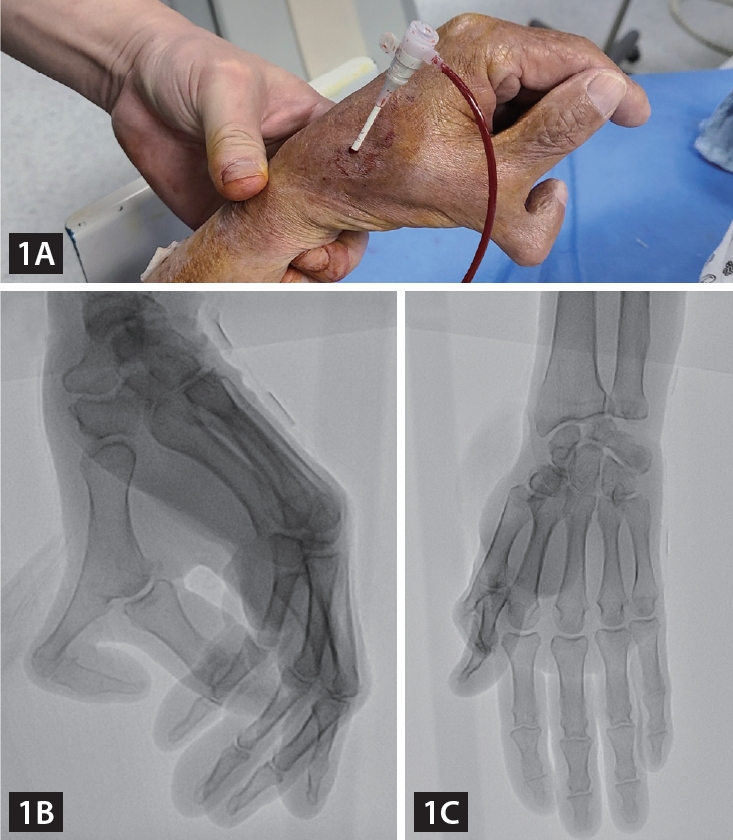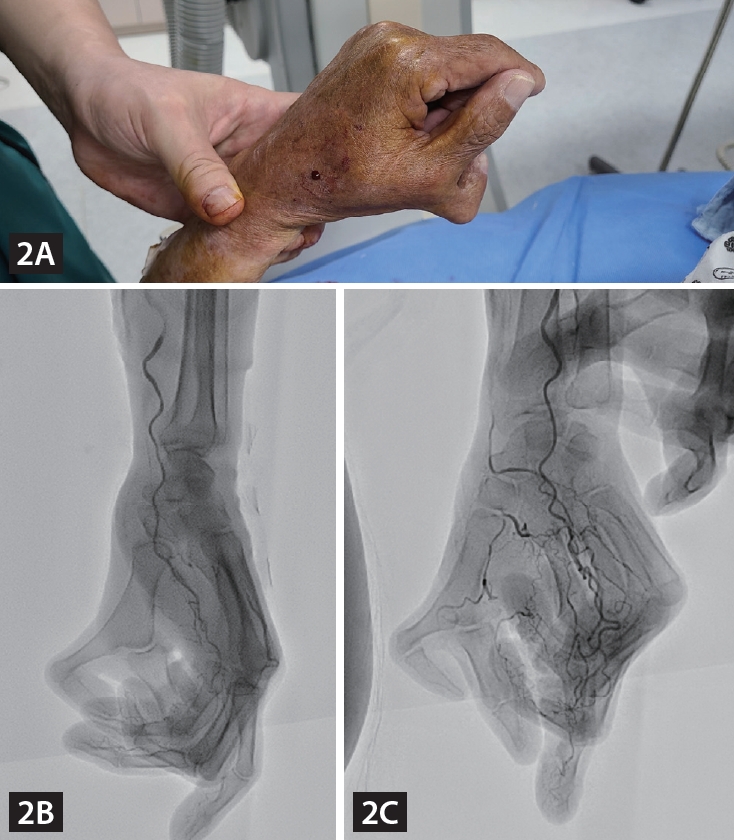An 82-year-old male patient was admitted due to atypical chest pain, and he underwent coronary angiography (CAG) via a left distal radial access (DRA). We found that he had polydactyly of his left hand, which could be classified as Wassel Type 4 polydactyly (Fig. 1) [1]. We were concerned about the anatomical variation of the left distal radial artery due to the anomaly, but a distal radial pulsation was easily palpated in the anatomical snuff box, and a successful puncture was performed. A CAG was performed using a 5 Fr vascular access sheath 10 cm in length, according to the usual method, and it revealed mild narrowing (Supplementary Video 1-3). We wanted to determine the intact natural vascular anatomy of the polydactyly-affected hand; hence, we performed manual compression for 10 minutes after sheath removal and performed brachial angiography via brachial puncture with a 20G angiocath cannula. Angiography showed the usual run-off of the left distal radial artery through the anatomical snuff box, and there was an additional digital branch to the accessory thumb (Fig. 2, Supplementary Video 4). The puncture site was compressed for an additional two hours with a gauze block and simple elastic bandage to ensure complete hemostasis.
Nowadays, in developed countries, most people with polydactyly are treated surgically in their youth; thus, it is rare to find polydactyly persisting in the old age [2]. Therefore, the scenario of a patient with polydactyly undergoing CAG at an advanced age is extremely rare, and this is the first reported case of CAG using DRA in a patient with polydactyly. Written informed consent was obtained from the patient.





 PDF Links
PDF Links PubReader
PubReader ePub Link
ePub Link Full text via DOI
Full text via DOI Download Citation
Download Citation Supplement video 1
Supplement video 1 Print
Print





